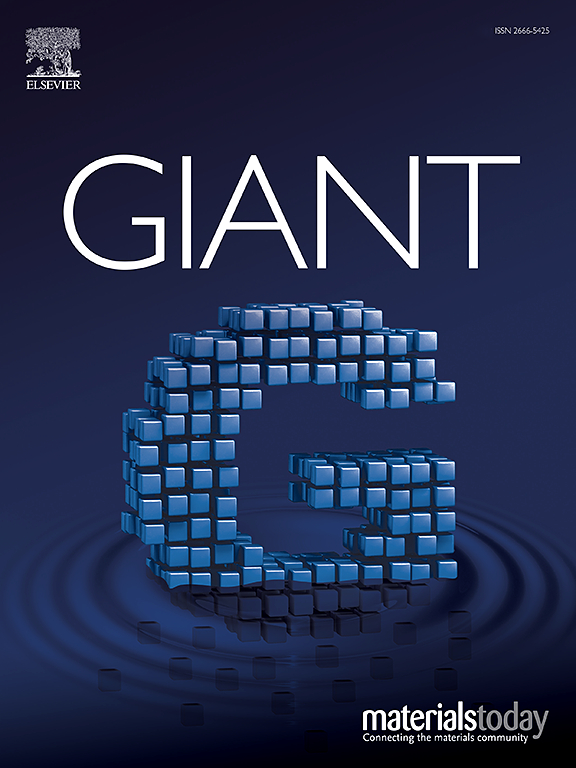低代树状大分子两亲表面活性剂静电配合物的介晶相
IF 4.9
1区 化学
Q2 CHEMISTRY, MULTIDISCIPLINARY
引用次数: 0
摘要
通过极性和非极性组分的微相分离,大分子与两亲性表面活性剂的络合有可能形成广谱、长阶的介晶相。本研究探讨了第二代(G2)和第三代(G3)聚氨基胺(PAMAM)树状大分子与十二烷基苯磺酸(DBSA)和十二烷基硫酸钠(SDS)两种表面活性剂之间形成的静电配合物的自组装行为。DBSA与PAMAM G2和G3树状大分子通过酸碱相互作用形成了长时间有序的层状结构。对层状结构的详细分析表明,含有树枝状分子的极层厚度实际上与枝状分子的世代数无关。这种现象甚至延伸到DBSA与PAMAM G4和G6树状大分子的配合物中,表明由于静电吸引,树状大分子沿着片层界面普遍受到高度压缩。在反离子释放的熵增益的驱动下,质子化的枝状大分子体系与SDS的络合产生了更高曲率的结构,其中SDS形成了堆积在二维六边形晶格中的圆柱形胶束,而原始的球形SDS胶束合并成圆柱形以增强与枝状大分子的电荷匹配。小角度x射线散射图中衍射峰相对强度的细微变化表明,随着表面活性剂与树状大分子结合密度的增加,柱状胶束的横截面由近圆形逐渐变形为椭圆形,有利于六边形堆积对称下的电荷匹配。本文章由计算机程序翻译,如有差异,请以英文原文为准。

Mesomorphic phases of the electrostatic complexes of amphiphilic surfactants with low-generation dendrimers
Through the microphase separation between the polar and nonpolar components, the complexation of macromolecule with an amphiphilic surfactant has the potential to construct a broad spectrum of mesomorphic phase with long-range order. This study explores the self-assembly behavior of the electrostatic complexes formed between poly(amidoamine) (PAMAM) dendrimers of generation two (G2) and generation three (G3) with two surfactants: dodecylbenzenesulfonic acid (DBSA) and sodium dodecyl sulfate (SDS). Long-range ordered lamellar structures formed in the complexes of DBSA with both PAMAM G2 and G3 dendrimers via acid-base interaction. A detailed analysis of the lamellar structure revealed that the thickness of the polar layer containing the dendrimer was virtually independent of the dendrimer generation number. This phenomenon even extended to the complexes of DBSA with PAMAM G4 and G6 dendrimers, indicating that the dendrimer molecules were in general highly compressed along the lamellar interface due to the electrostatic attraction. The complexations of protonated dendrimer systems with SDS driven by the entropic gain from counterion release yielded a higher-curvature structure, where the SDS formed cylindrical micelles packed in a 2D hexagonal lattice, as the original spherical SDS micelles merged into cylinders to enhance the charge matching with the dendrimers. The subtle variation of the relative intensities of the diffraction peaks in the small angle X-ray scattering pattern suggested that, as the binding density of the surfactant to the dendrimer increased, the cross section of the cylindrical micelle progressively deformed from nearly circular to elliptical shape to facilitate the charge matching under the hexagonal packing symmetry.
求助全文
通过发布文献求助,成功后即可免费获取论文全文。
去求助
来源期刊

GIANT
Multiple-
CiteScore
8.50
自引率
8.60%
发文量
46
审稿时长
42 days
期刊介绍:
Giant is an interdisciplinary title focusing on fundamental and applied macromolecular science spanning all chemistry, physics, biology, and materials aspects of the field in the broadest sense. Key areas covered include macromolecular chemistry, supramolecular assembly, multiscale and multifunctional materials, organic-inorganic hybrid materials, biophysics, biomimetics and surface science. Core topics range from developments in synthesis, characterisation and assembly towards creating uniformly sized precision macromolecules with tailored properties, to the design and assembly of nanostructured materials in multiple dimensions, and further to the study of smart or living designer materials with tuneable multiscale properties.
 求助内容:
求助内容: 应助结果提醒方式:
应助结果提醒方式:


